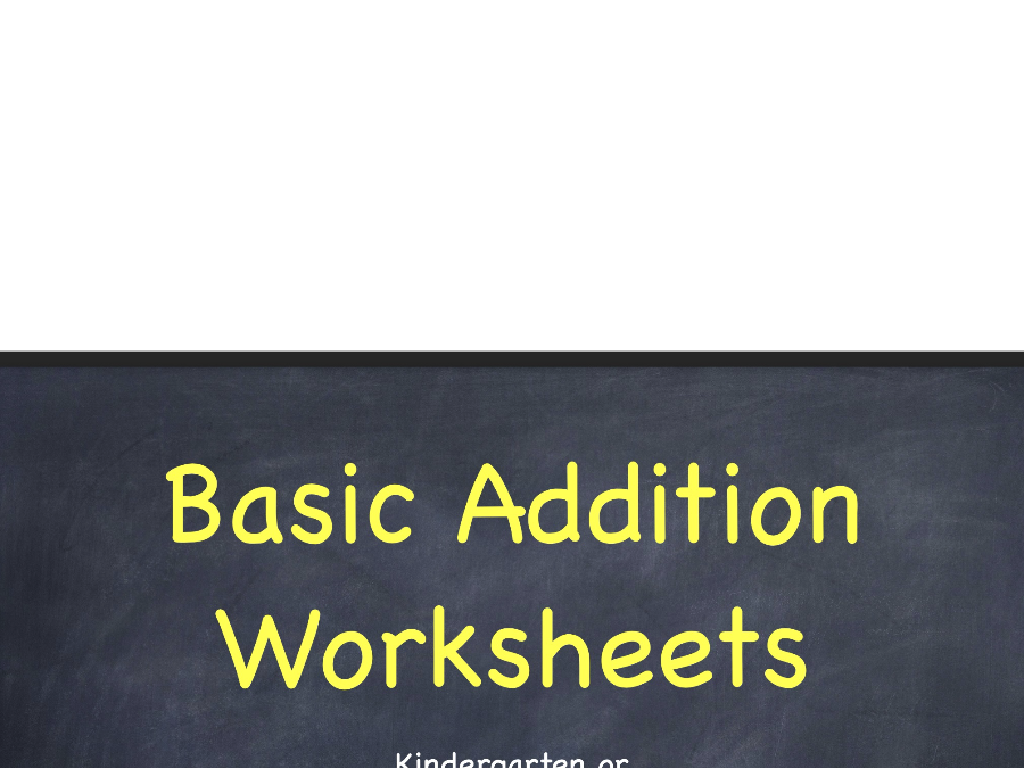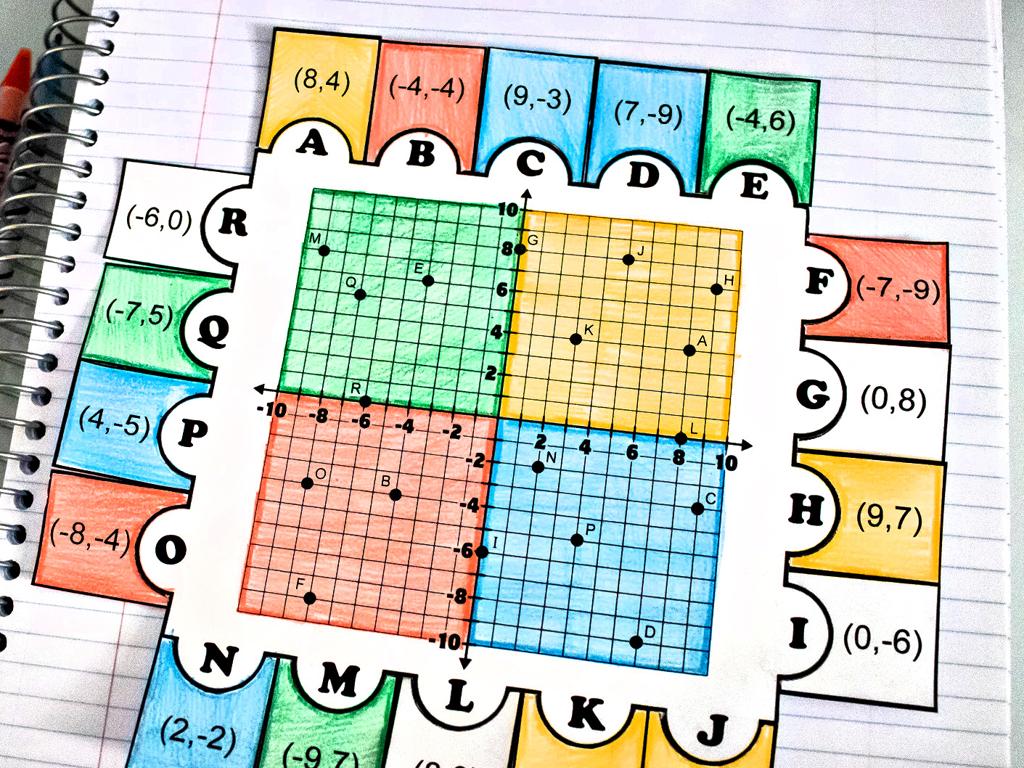Create Relative Frequency Tables
Subject: Math
Grade: Sixth grade
Topic: Data And Graphs
Please LOG IN to download the presentation. Access is available to registered users only.
View More Content
Understanding Relative Frequency Tables
– What is data?
Data are facts or statistics collected for reference or analysis.
– Ways to represent data
Data can be shown using charts, graphs, and tables.
– Exploring relative frequency
Relative frequency shows how often something happens divided by all outcomes.
– Using tables in practice
We’ll create our own tables with class data.
|
Begin the lesson by explaining that data is a collection of facts, such as numbers, words, measurements, observations or even just descriptions of things. Emphasize the importance of data in making informed decisions and understanding the world around us. Introduce different methods of data representation, including visual tools like charts and graphs. Focus on relative frequency tables, which are a type of table that shows how often something happens in relation to the total number of events. Provide examples and guide students through creating a relative frequency table using data collected from the class, such as favorite colors or number of siblings. This hands-on activity will help solidify their understanding of the concept.
Understanding Frequency Tables
– Define a frequency table
– A chart that shows the number of times an item or number occurs.
– Frequency tables in daily life
– Used to organize data in weather reports, class surveys, or tracking daily activities.
– Example of a simple frequency table
– For instance, tallying the types of fruit students eat for lunch over a week.
|
A frequency table is a tool used to organize data into categories and show the number of occurrences for each category. It’s a fundamental concept in data management that helps in understanding patterns and making decisions. In daily life, frequency tables are used in various scenarios like recording temperatures, survey responses, or even tracking the frequency of certain activities. Provide a simple example, such as recording the different types of fruits eaten by students during lunch in a week, to illustrate how to create and interpret a frequency table. This will help students grasp the concept and see its practical application. Encourage them to think of other areas where they could use frequency tables.
From Frequency to Relative Frequency
– What is relative frequency?
– It’s the ratio of a value’s frequency to the total number of data points.
– Frequency vs. Relative Frequency
– Frequency counts how often something happens, while relative frequency compares it to the whole.
– The usefulness of relative frequency
– Helps compare different datasets and understand proportions.
– Creating a relative frequency table
– Divide each frequency by the total number and multiply by 100 to get a percentage.
|
This slide introduces students to the concept of relative frequency, which is a step beyond simply counting occurrences (frequency). It’s important for students to grasp that while frequency gives us raw numbers, relative frequency puts those numbers into perspective by relating them to the total number of observations. This is crucial when comparing data sets of different sizes or when trying to understand the proportion of a certain outcome within the context of the whole. To create a relative frequency table, students will learn to divide the frequency of each outcome by the total number of outcomes and then convert it to a percentage. This skill will enhance their ability to analyze and interpret data in a meaningful way.
Creating a Relative Frequency Table
– Count total data points
– Tally up how many pieces of data you have.
– Divide frequency by total points
– For each category, divide its count by the total data points.
– Convert result to percentage
– Multiply by 100 to change the decimal to a percentage.
– Interpret the table
|
This slide outlines the steps to create a relative frequency table, which is a useful tool in understanding data distributions in statistics. Start by counting the total number of data points collected. Next, divide the frequency of each category by the total number of data points to find the relative frequency. If needed, convert this decimal to a percentage by multiplying by 100. This process helps students to visualize and interpret data in terms of the relative importance of different categories. Encourage students to practice with real data sets to solidify their understanding.
Example Time: Favorite Ice Cream Survey
– Conduct a survey on favorite flavors
– Tally the survey results
– Count how many chose each flavor
– Calculate relative frequencies
– Divide flavor count by total surveys
– Create a relative frequency table
– Display results in a table format
|
This slide is an interactive example to help students understand how to create a relative frequency table. Start by explaining that a survey was conducted to find out the favorite ice cream flavors among a group of people. Show the raw data collected from the survey. Then, guide students through tallying the results for each flavor. Next, demonstrate how to calculate the relative frequency for each flavor by dividing the number of surveys that mentioned the flavor by the total number of surveys. Finally, show how to organize this information into a relative frequency table. Make sure to emphasize that the relative frequencies should add up to 1 or 100% if converted to percentages. This hands-on example will help solidify the concept of relative frequency tables in the context of a real-world scenario that is relatable to sixth graders.
Your Turn: Conduct a Class Survey!
– Decide on a survey topic
– Collect survey data
– Create a relative frequency table
– Tally your results and calculate the relative frequencies
– Discuss findings with the class
– Share what the data reveals about our class
|
This class activity is designed to provide hands-on experience with creating relative frequency tables. Students will first choose a topic of interest for their survey, such as favorite foods, hobbies, or sports. They will then collect data from their classmates and use the information to construct their own relative frequency tables. This will involve tallying up the results and calculating the relative frequencies by dividing the frequency of each response by the total number of responses. Once completed, students will have the opportunity to present their findings to the class, fostering a discussion about the data and what it may reveal about the group’s preferences or behaviors. The teacher should prepare to guide students through each step, ensuring they understand how to calculate relative frequencies and interpret their tables.
Sharing Our Findings with Relative Frequency Tables
– Present your table to the class
– Discuss insights from frequency tables
– What patterns do you notice? Any surprising data?
– Engage in a Q&A session
– Ask questions about classmates’ tables and explain your own
– Reflect on the learning experience
|
This slide is designed to facilitate a classroom activity where students will share the relative frequency tables they have created based on their collected data. Encourage each student to explain their table and the data it represents. The discussion should focus on what the data reveals, such as trends, patterns, and any unexpected results. During the Q&A session, prompt students to ask insightful questions about their classmates’ findings and to clarify any aspects of their own data. This activity will help students to understand the practical application of relative frequency tables and to interpret data effectively. It’s also an opportunity for them to practice their presentation and communication skills. Provide guidance on how to give and receive constructive feedback.
Conclusion: Understanding Relative Frequency Tables
– Recap: Relative Frequency Tables
– A table showing how often something happens divided by the total number of outcomes.
– Importance of these tables
– They help us understand proportions and make comparisons in data.
– Homework: Create your own table
– Find a dataset, like favorite fruits, and calculate the relative frequencies.
– Be ready to discuss your findings
|
As we conclude, remember that a relative frequency table is a powerful tool for understanding proportions in a dataset. It’s not just about counting; it’s about comparing the frequency of each category to the whole. For homework, students should find a dataset of interest, perhaps surveying friends or family, and create their own relative frequency table. This will reinforce their understanding of the concept and its practical application. In the next class, we’ll discuss their findings, which will help them articulate their understanding and learn from each other’s datasets.






